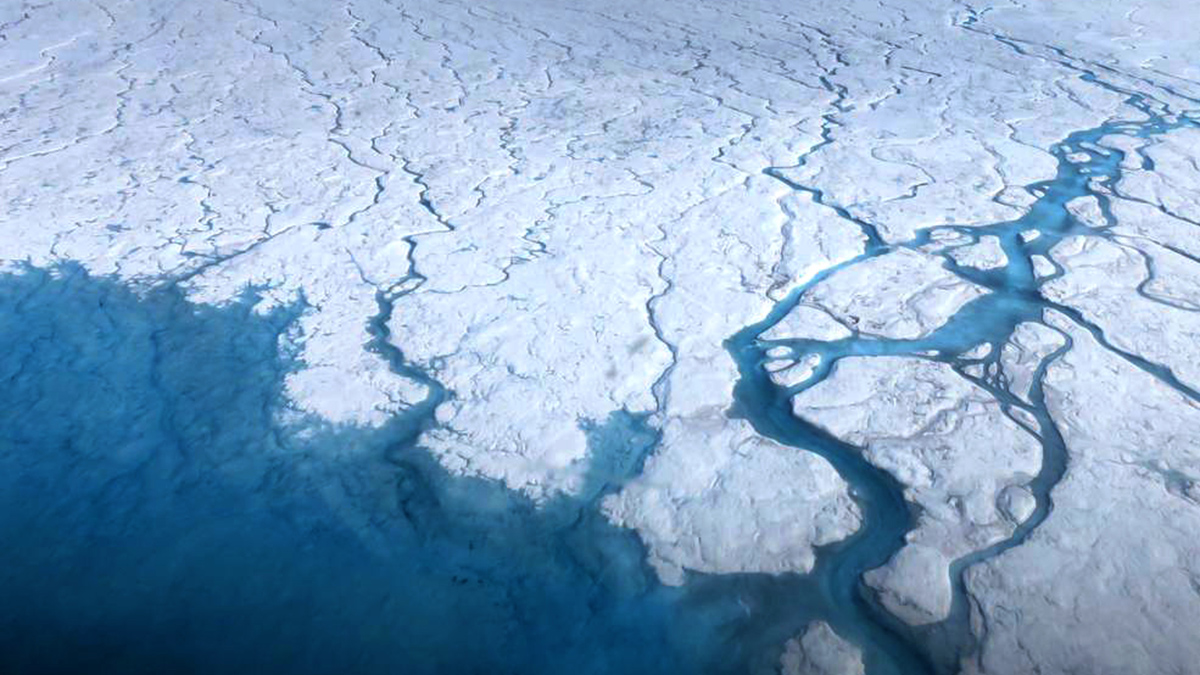In July 2012, almost the entire Greenland Ice Sheet experienced surface melting, including high-altitude areas that typically remain frozen year-round. Historically, most of the ice sheet’s melting has been due to warmer ambient air temperatures in the summer: During these months, northeastern Greenland is pitted with icy azure melt pools and snakelike ribbons of icy streams. More recently, however, some studies have suggested a link between this record melting and foehn—warm, dry, downslope winds appropriately named the German word for “hair dryer.”
“But nobody has really dug into those effects in Greenland where we expected it might be happening,” said University of Wisconsin–Madison atmospheric scientist Kyle Mattingly.
Northeastern Greenland’s remoteness makes it a hard area to study. Using satellite imagery, atmospheric river detection algorithms, a new foehn identification technique, and high-resolution atmospheric models, Mattingly and his colleagues revealed that strong atmospheric rivers—narrow corridors of the atmosphere that transport vast amounts of water vapor—are flowing across the polar ice sheet and bringing moisture-laden air to northwestern Greenland. These atmospheric rivers cross east over northern Greenland’s wide, relatively gently sloping dome, causing precipitation on the western side of the dome and bringing dry, warm air to the eastern side. This triggers foehn events, leading to significant ice sheet melt.
In a study published in Nature Communications, the researchers showed that although foehn conditions and the strongest 10% of atmospheric rivers happen simultaneously just 1.11% of the time, this combination of conditions accounts for a disproportionately high 5%–10% of melt in recent melt seasons. The scientists presented their research at AGU’s Annual Meeting 2023 in San Francisco.
Rising Temperatures, Rising Sea Levels
These strong downslope winds are warming “the temperature of the air near the surface of the ice by 10, 15, 20—if not more—degrees (Fahrenheit) in a very short space of time.”
These strong downslope winds are warming “the temperature of the air near the surface of the ice by 10, 15, 20—if not more—degrees (Fahrenheit) in a very short space of time,” said atmospheric scientist Jenny Turton. “They are also really dry, so you don’t really get the cloud formation.” In the summertime, this lack of clouds increases the solar radiation at the surface, further contributing to melting.
In the past 30 years, the Greenland Ice Sheet has lost about 3,900 billion metric tons of ice, upsetting the surface mass balance: The surface of the ice sheet is melting more quickly than it’s accumulating. The 600-kilometer Northeast Greenland Ice Stream drains a basin that makes up 16% of the total Greenland Ice Sheet, then discharges into three distinct marine outlet glaciers, which hold more than a meter of sea level rise potential. The rapid thinning of this giant drainage basin indicates that future sea level rise may come earlier than previously expected.
However, as atmospheric moisture rises because of global warming, an increase in atmospheric rivers—and an accompanying increase in melt—is expected, said Marco Tedesco, a climate scientist at Columbia University. “The changes in the atmosphere patterns that we observed in the Arctic of the past 2 decades are very likely connected to the disruption of changes in terms of snow and sea ice that we are witnessing,” he said.
This combination makes more extreme surface ice sheet melt events inevitable. Knowing the impacts these short-term events have on the northeastern Greenland Ice Sheet is important when researching future sea level rise, the researchers said.
—Suzanne Dodge (@suzannedodgevt), Science Writer


